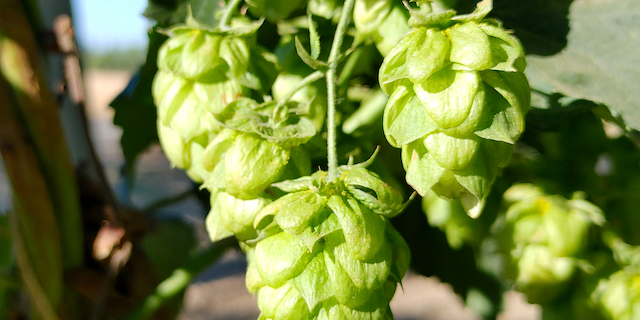WSU plant diagnostic clinic shares 2024 ‘unusual’ findings
Published 5:15 pm Sunday, December 1, 2024

- Washington State University plant pathology professor Tim Murray. “It was an interesting year and kind of a mixed bag of things,” he said.
August and September rains meant some diseases appeared sooner than usual, researchers at Washington State University’s plant diagnostic clinic say.
Conditions were more conducive for fall establishment of stripe rust, eyespot and Cephalosporium stripe than in the past several years, clinic technicians said in their 2024 wrap-up and early 2025 outlook.
Wheat streak mosaic virus (WSMV) can build-up in volunteer wheat, which should be destroyed before planting a new crop.
Most farmers know what the diseases look like, but “weird weather,” early rain and heat combined to make the symptoms appear different than normal, plant diagnostician Cassandra Bates said.
“We had that early moisture, so that allowed for some inocculum to show its face,” Bates said. “Some of the symptomatologies weren’t characteristic — like the Cephalosporium stripe, when that sample came in, it didn’t scream Cephalosporium stripe.
“When we start seeing stuff is getting a little bit different, based on weather patterns,” Bates added. “Even though we might think, ‘Oh, we’re not getting enough moisture,’ it’s the timing of the moisture.”
“It was an interesting year and kind of a mixed bag of things,” said Tim Murray, WSU plant pathology professor. “We don’t see the common stuff, we see the unusual stuff.”
Ergot
The fungus ergot was detected in a wheat seed sample.
Ergot is uncommon but the affected seed lot was produced in western Montana, and the seed producer noted the disease occurs frequently in that area, according to the clinic.
Ergot is regulated in certified seed.
Ergot is “pretty distinct,” and usually gets separated out, but this was about the size of a wheat seed, Bates said.
Murray recommends growers who know they have ergot plant their wheat seed a little deeper, so that the ergot can’t make it to the surface when it germinates. They can also spray prophylactic fungicide at flowering.
He’s not concerned that ergot might become more widespread. The Pacific Northwest mostly doesn’t have good conditions for infection.
“What it really requires is for flowers to be open during pollination,” Murray said. “With wheat, most of the time, that doesn’t happen.”
He finds ergot in the wildflowers around wheat fields fairly often.
“It’s not that the fungus is not here already,” he said. “It’s here, it’s common, we just don’t have conditions that allow it to become a problem.”
“Ergot was probably the surprise of the season,” Bates said.
Submit a sample
Bates estimates the clinic received several hundred samples during the season.
Most farmers know what a disease looks like, but might send a sample to the lab for confirmation. she said.
They might send a sample suspecting one disease, but it could wind up being a physical or environmental cause, or a planting error, she said.
Sometimes suspected fusarium head blight ends up being frost damage, for example.
“Don’t discredit frost in the field, even though (temperatures) have been in the 40s or 50s,” she said. “Especially around the Palouse, we have that clay soil, it doesn’t warm up nearly as quickly and just a small little dip in the field could decrease that temperature just enough.”
Bates and Murray recommend farmers scout their fields.
“If you see something unusual, submit a sample,” Murray said. “It may be nothing, but if it’s a concern, submit the sample so it can be diagnosed. We really can’t do anything until we know what the problem is.”







